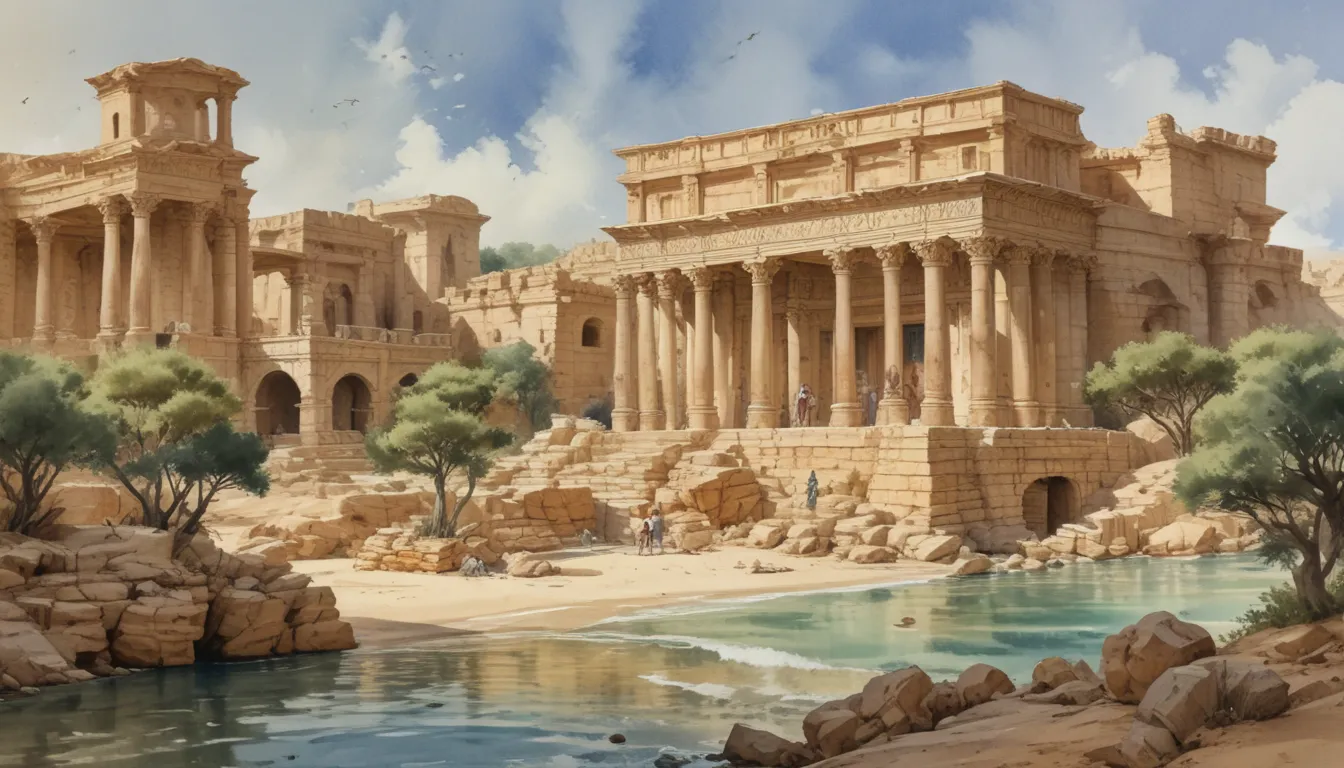The images in our articles are for illustrative purposes only and may not exactly match the content. They are intended to capture your interest and complement the text, not to replace it.
Step into the realm of enchanting history and architectural splendor as we embark on a journey to the ancient Roman city of Leptis Magna in Libya. This mysterious city, founded in the 7th century BCE, holds a treasure trove of secrets waiting to be discovered by history enthusiasts, archaeologists, and adventurers alike. Let’s explore 15 fascinating facts that elevate Leptis Magna to one of the most remarkable archaeological sites in the world, offering a glimpse into the past like never before.
Unraveling the Unique Blend of Roman and Punic Civilization
Nestled on the picturesque coast of modern-day Libya, Leptis Magna stands as a testament to the harmonious fusion of Roman and Punic cultures. This captivating blend of traditions and influences resulted in a distinct architectural style and cultural heritage that sets Leptis Magna apart from other ancient cities.
The Birthplace of Emperor Septimius Severus
One of the most intriguing aspects of Leptis Magna is its association with Emperor Septimius Severus, the influential ruler who left a lasting mark on the Roman Empire. Born in this ancient city, Severus’s legacy is enshrined in grand structures like the Arch of Septimius Severus, showcasing the historical significance and cultural richness of Leptis Magna.
A UNESCO World Heritage Site
Recognized for its exceptional historical and cultural value, Leptis Magna holds the prestigious title of a UNESCO World Heritage Site. This accolade underscores the importance of preserving and safeguarding the ancient city for future generations to appreciate and cherish.
Breathtaking Coastal Beauty
Perched along the mesmerizing Mediterranean coastline, Leptis Magna offers a backdrop of unparalleled natural beauty. The juxtaposition of ancient ruins against the azure waters of the sea creates a cinematic vista that leaves visitors in awe of the city’s stunning locale.
The Magnificent Amphitheater
Among the marvels of Leptis Magna stands its grand amphitheater, a testament to Roman engineering prowess capable of accommodating over 16,000 spectators. This architectural masterpiece symbolizes the city’s historical grandeur and serves as an iconic landmark of its past glory.
Journey Through Pristine Ancient Ruins
Exploring the remarkably well-preserved ancient ruins of Leptis Magna is a captivating experience that offers a glimpse into the daily life of its inhabitants. From intricate mosaics to Roman baths and marketplaces, these ruins paint a vivid picture of the city’s vibrant past.
Nurturing the Empire’s Breadbasket
Renowned for its fertile agricultural lands, Leptis Magna earned the title of the “Empire’s Breadbasket” for its contribution to the Roman Empire’s food supply. This agricultural prosperity solidified the city’s position as a vital center of influence and commerce in the region.
Engineering Marvels: Water Supply System
Leptis Magna’s sophisticated water supply system, featuring aqueducts and fountains, underscored the city’s advanced engineering capabilities. These innovative solutions ensured a steady flow of water to meet the needs of its residents, highlighting the Romans’ ingenuity and foresight.
Luxurious Ancient Baths
The opulent ancient baths of Leptis Magna were renowned for their grandeur and lavish amenities, including hot and cold baths, saunas, and gymnasiums. These sprawling complexes provided residents with a sanctuary for relaxation and wellness in a setting of unrivaled magnificence.
The Intricate Artistry of Mosaics
Adorning the floors and walls of Leptis Magna’s buildings are exquisite mosaic artworks that showcase the intricate craftsmanship of ancient times. Depicting scenes from mythology, daily life, and Roman culture, these mosaics exemplify the city’s artistic richness and cultural vibrancy.
The Splendor of the Arch of Tiberius
Another architectural gem in Leptis Magna is the imposing Arch of Tiberius, erected to honor the Roman Emperor Tiberius. The intricate carvings and detailed craftsmanship of this monumental structure bear witness to the exceptional artistic skill that thrived in ancient Leptis Magna.
Cultural Hub: Theater of Leptis Magna
The Theater of Leptis Magna served as a vibrant hub of entertainment and cultural gatherings, hosting a myriad of performances and artistic expressions. With a seating capacity of approximately 5,000 spectators, this ancient theater witnessed the richness of artistic endeavors in the city.
Preserving Heritage: Excavation and Restoration
Through extensive excavation and restoration efforts, Leptis Magna’s rich cultural heritage is meticulously preserved for generations to come. These ongoing endeavors ensure that the enigmatic wonders of the ancient city continue to captivate and inspire visitors from around the world.
Conclusion: A Timeless Journey Through the Ages
In conclusion, Leptis Magna stands as a beacon of ancient magnificence, offering a window into the splendor of the Roman Empire and the vibrant tapestry of its cultural heritage. From colossal arches to intricate mosaics, from luxurious baths to strategic water systems, the city’s allure is boundless. As you wander through the ruins of Leptis Magna, let its enigmatic charm and rich history transport you to a bygone era of greatness and ingenuity.
Frequently Asked Questions:
-
How old is Leptis Magna?
Leptis Magna was founded in the 7th century BC and flourished during the Roman Empire, making it over two thousand years old. -
Is Leptis Magna well-preserved?
Yes, Leptis Magna boasts remarkably well-preserved ruins showcasing the grandeur of Roman architecture and design. -
Can I visit Leptis Magna?
Yes, visitors can explore Leptis Magna, but it’s essential to check travel advisories and regulations, considering its location in Libya. Ensure you have the necessary permits and adhere to safety guidelines during your visit. -
Are guided tours available at Leptis Magna?
Indeed, guided tours offer valuable insights into the history and significance of Leptis Magna, enriching visitors’ understanding of the archaeological site. -
How can I reach Leptis Magna?
Located near Al Khums in Libya, reaching Leptis Magna involves flying to Tripoli and embarking on a road trip or hiring a local guide to access this ancient marvel.
Unravel the mysteries of Leptis Magna and embark on a journey through time, where ancient wonders and cultural treasures await your discovery. Let the echoes of history guide your steps as you explore the enigmatic allure of this remarkable archaeological site, a testament to human ingenuity and perseverance through the ages. Plan your visit to Leptis Magna and witness the legacy of a bygone era come to life before your eyes.






